calsfoundation@cals.org
U.S. Marshals Service (USMS)
The U.S. Marshals Service (USMS) is the oldest federal law enforcement agency in the nation. Divided into ninety-four districts, the agency’s structure aligns with that of the United States district courts. Arkansas has two districts—the Western District headquartered in Fort Smith (Sebastian County) and the Eastern District headquartered in Little Rock (Pulaski County). During the nineteenth century, fugitives often fled to Indian Territory (present-day Oklahoma) in an effort to escape prosecution. Apprehending these criminals was a dangerous assignment for the U.S. deputy marshals—consequently, there are more deputy and special deputy marshals buried in the Fort Smith region than anywhere else in the nation.
On September 24, 1789, George Washington signed Senate Bill 1, which included the Judiciary Act, of which Sections 27 and 28 established the USMS. Over the next two days, he appointed the first thirteen U.S. marshals, many of whom were friends and colleagues from the military. From the beginning, U.S. marshals were responsible for the enforcement of federal law and protection of the judiciary. These duties included protecting judges, witnesses, and court proceedings; supervising executions; conducting the U.S. Census (until 1870); serving warrants; and arresting those who violated federal laws.
Each district is led by a U.S. marshal who serves at the pleasure of the president. In the early days, U.S. marshals had the responsibility of hiring their own deputies. It was common for the marshal to hire them only as needed, as he was responsible for paying their salary. Today, deputy marshals are civil servants who remain in their position regardless of presidential administrations. The U.S. Marshals Service is headed by a director who is also a presidential appointee. Currently, the USMS has additional offices in Puerto Rico, Guam, the Virgin Islands, and the Northern Mariana Islands. They work internationally, both training police forces and tracking fugitives.
The first U.S. marshal in Arkansas was George Washington Scott. He was appointed on May 29, 1820, as U.S. marshal for Arkansas Territory. Scott served until Elias Rector was appointed on March 2, 1831. Rector’s tenure continued after Arkansas gained statehood in 1836, and he served as the first U.S. marshal for the District of Arkansas until April 20, 1841.
Arkansas was divided into the two current districts in 1851, but the same federal judge presided over both districts. After the divide, on March 12, George Knox was appointed the first U.S. marshal for the Western District of Arkansas, then headquartered in Van Buren (Crawford County). The Eastern District headquarters remained in Little Rock. On March 3, 1871, the office for the Western District of Arkansas was moved to Fort Smith. With that move, the Western District received its own judge. From 1851 to 1896, the Western District held jurisdiction over thirteen counties and all or parts of the Indian Territory. The history of Fort Smith is intricately connected to the U.S. Marshals Service. The city, once known as “Hell on the Border,” is renowned for its connection to the era of Judge Isaac Parker and the U.S. and deputy marshals.
Between 1871 and 1874, two U.S. marshals (in western Arkansas) were removed for being ineffective. Isaac Parker, known as the “Hanging Judge,” was appointed federal judge for the Western District of Arkansas in May 1875, and he almost immediately appointed 200 deputies in an effort to get a handle on the crime and violence that plagued the area. During his tenure, more than sixty-five deputies died in the line of duty. Famous outlaws and criminals sentenced by Judge Parker include the Cook Gang, Cherokee Bill, and Belle Starr. Some of the most well-known deputy marshals served in the Western District of Arkansas—Bass Reeves, Heck Thomas, Zeke Proctor, Frank Dalton, and Addison Beck, to name a few.
During the 1950s and 1960s, the U.S. Marshals Service was heavily involved in the integration of schools across the nation. The quick escalation of the crisis surrounding the desegregation of Central High School in Little Rock prevented their involvement in that instance. In 1958, U.S. Marshal Richard Beal Kidd meticulously organized and readied his men to take over for the 101st Airborne. He hired more than 100 special deputies, drew up a work plan, and outfitted his men to protect the African-American students, but the schools were closed for the 1958–59 school year, rendering USMS involvement unnecessary. However, Little Rock laid the groundwork for how the federal government handled the integration of the University of Mississippi, where 123 deputy marshals and an additional 413 border patrol and prison guards were deputized to meet angry mobs armed with bricks, rocks, and other weapons. President Dwight D. Eisenhower and his successors turned to the U.S. Marshals Service first for enforcement of federal court orders. The USMS “personified the principle of civilian control,” according to Frederick S. Calhoun.
The USMS works closely with area law enforcement agencies, including local police and sheriff’s departments. Because of their ability to deputize other police officers, the USMS established task forces around the nation to combat the growing number of sexual predators. The passage of the Adam Walsh Act in 2006 made failure to register as a sex offender a federal offense and gave the USMS the authority to enforce the law. Arkansas has several USMS-led task forces dedicated to finding these fugitives.
Every year, the U.S. marshals and its associated task forces throughout the country arrest more fugitives than all federal law enforcement agencies combined. In 2016, the U.S. marshals arrested a total of 88,432 fugitives.
On the 225th anniversary of the U.S. Marshals Service on September 24, 2014, ground was broken at a ceremony in Fort Smith for the United States Marshals Museum; the museum opened in 2023.
For additional information:
Calhoun, Frederick S. The Lawmen: United States Marshals and Their Deputies, 1789–1989. New York: Penguin, 1991.
Shirley, Glenn. Law West of Fort Smith: A History of Frontier Justice in Indian Territory, 1834–1896. Lincoln: University of Nebraska Press, 1968.
U.S. Marshals and Deputy Marshals for the Western District of Arkansas. https://www.nps.gov/fosm/learn/historyculture/us-marshals-deputy-marshals-western-district-of-arkansas.htm (accessed April 11, 2022).
U.S. Marshals Service. http://www.usmarshals.gov (accessed April 11, 2022).
United States Marshals Museum. http://www.usmmuseum.org/ (accessed April 11, 2022).
Jessica Hayes
United States Marshals Museum
 Fagan, James Fleming
Fagan, James Fleming Rector, Henry Massie
Rector, Henry Massie Three Guardsmen
Three Guardsmen Upham, Daniel Phillips
Upham, Daniel Phillips Walls, A. J.
Walls, A. J.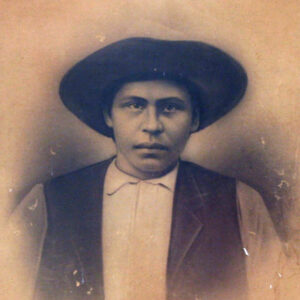 Cherokee Bill
Cherokee Bill 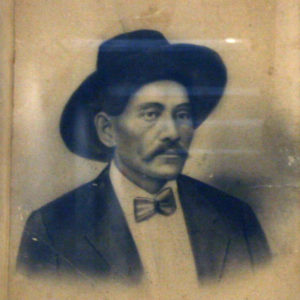 Ned Christie
Ned Christie 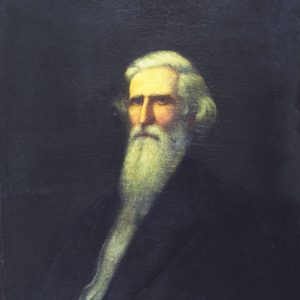 Henry Rector
Henry Rector  Bass Reeves
Bass Reeves 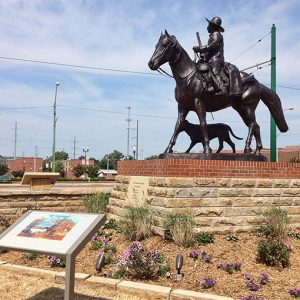 Bass Reeves Statue
Bass Reeves Statue 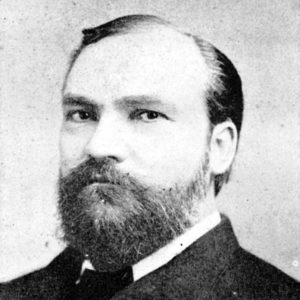 Logan Roots
Logan Roots  U.S. Marshals Museum
U.S. Marshals Museum 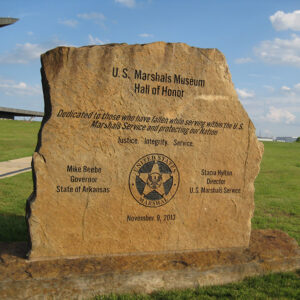 U.S. Marshals Museum Monument
U.S. Marshals Museum Monument  U.S. Marshals Museum Statue
U.S. Marshals Museum Statue 




Comments
No comments on this entry yet.